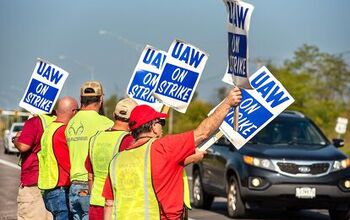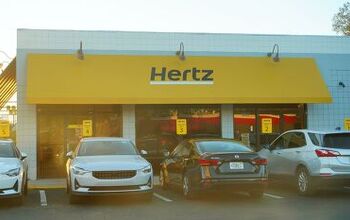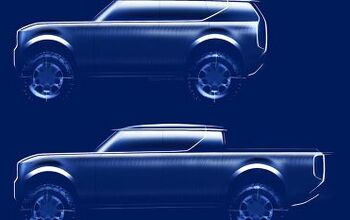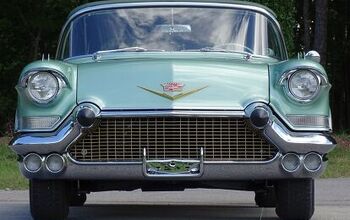Who Wants To Be A Millionaire And Save The World From Eternal Damnation?

When it comes to the cause of the alleged Toyota unintended acceleration, the TTAC commentariat is divided into two camps:
One side is convinced they know what’s wrong with Toyota. (It’s the cursed computer. May it roast in hell and grow tin whiskers.)
The other side isn’t so sure and argues for caution. It could be pilot error. Plain old hysteria also isn’t ruled out. Or some trade warfare that reared its no so pretty head at yesterday’s hearings: “You block our beef because of mad cow disease. We do the same to your cars.”
Well, who says life is fair. Flash: The doubters are being discriminated against. The commentators who know what’s wrong with Toyota can become instant millionaires. Here is how it works:
“Solve the unintended acceleration problem, win a million dollars,” announced the Los Angeles Times.
To the tune of one million dollars, Edmunds launched a public competition to find the cause of and solution to the problem that has allegedly caused scores of deaths, has destroyed the reputation of Toyota, triggered three congressional hearings (at last count,) and countless lawsuits. The trouble is: Nobody really knows what’s going on.
Edmunds wants to find out. According to their press release, „Edmunds.com is currently drafting rules for a new prize, attempting to attract the best thinkers in the world to apply themselves to determine what is really causing sudden unexpected acceleration in vehicles.”
To those who know what’s wrong with Toyota, this should be easy money. All one needs to do is to “re-create unintended acceleration in a car and then solve that problem and prove the whole thing to us,” said Edmunds CEO Jeremy Anwyl.
I’m a poor person (writing forTTAC has that effect.) But if one of our readers, who had opined in the past that he or she knows what’s wrong, should get the $1 million prize, then I’ll personally raise it by 10,000 Japanese Yen out of my own slim pocket. So don’t just sit there, do something. Break out the resistance boxes and the paperclips. Connect data recorders to your Toyotas and stress the heck out of them.
But you know what: I think Edmunds will keep its money. And I will have to spend the 10,000 Yen in a seedy joint in Kabukicho.

Bertel Schmitt comes back to journalism after taking a 35 year break in advertising and marketing. He ran and owned advertising agencies in Duesseldorf, Germany, and New York City. Volkswagen A.G. was Bertel's most important corporate account. Schmitt's advertising and marketing career touched many corners of the industry with a special focus on automotive products and services. Since 2004, he lives in Japan and China with his wife <a href="http://www.tomokoandbertel.com"> Tomoko </a>. Bertel Schmitt is a founding board member of the <a href="http://www.offshoresuperseries.com"> Offshore Super Series </a>, an American offshore powerboat racing organization. He is co-owner of the racing team Typhoon.
More by Bertel Schmitt
Latest Car Reviews
Read moreLatest Product Reviews
Read moreRecent Comments
- MaintenanceCosts Most of the article after the blockquote is Posky laboring mightily to somehow blame this clearly anticompetitive and oligopolistic conduct on the big bad government.I look forward to some of the usual commenters explaining to us that, actually, the oil industry is a cuddly teddy bear and the real villain is people trying to sell us cars that don't use oil.
- Bd2 A modest price bump for one of the better if not the best vehicle in it's class. And it's a very good deal still considering the Front wheel drive competition over at Lexus to name one. These Genesis vehicles are more like BMWs of the 90s but with better styling.
- Dave M. What???? Big business taking advantage of us? I thought it was all Biden's fault!?!
- OA5599 Now if we could only get Toyota to change BZ4X...
- FreedMike You mean the petroleum market is manipulated and doesn't respond to normal supply/demand? No way. Can't be. This, folks, is why electrification is important - the only reason why the petroleum industry gets away with this is because they were the only game in town for over a century. That has GOT to change or we'll keep getting ripped off.

































Comments
Join the conversation
NHTSA has reports of failures on "fixed" Toyotas. http://www.businessweek.com/news/2010-03-03/u-s-contacting-toyota-owners-filing-complaints-on-fixed-cars.html Not a surprise I suppose. The Edmunds challenge is tempting - depending on what the rules are. Putting together a team to try to win the money for charity might be fun. Then again, without access to failed vehicles and complete documentation it wouldn't be an easy task.
http://www.popularmechanics.com/automotive/how_to/4347704.html "Anatomy of Toyota's Problem Pedal: Mechanic's Diary" By Mike Allen, PM senior automotive editor March 3, 2010 Bottom line: The system is not only redundant, it's double-redundant. The signal lines from the pedal to the ECM are isolated. The voltages used in the system are DC voltages—any RF voltages introduced into the system, ... would be AC voltages, which the ECM's conditioned inputs would simply ignore. Neither your cellphone nor Johnny's PlayStation have the power to induce much confusion into the system. These throttle-by-wire systems are very difficult to confuse—they're designed to be robust, and any conceivable failure is engineered to command not an open throttle but an error message. So what to make of the unintended acceleration cases popping up by the dozens? Not the ones explainable by problem sticky pedals, but the ones documented by people who claim their vehicle ran away on its own, with no input, and resisted all attempts to stop it? ... Some are probably the result of Audi 5000 Syndrome, where drivers simply lost track of their feet and depressed the gas instead of the brake. ... But the possibility that a vehicle could go from idling at a traffic light to terrific, uncalled-for and uncontrollable acceleration because the guy next to you at a traffic light answered his cellphone? Or some ghost in the machine or a hacker caused a software glitch that made your car run away and the brakes suddenly simultaneously fail? Not in the least bit likely. Toyota deserves a better deal than the media and Congress are giving it.